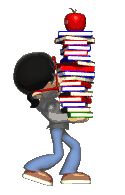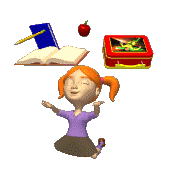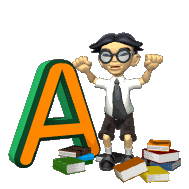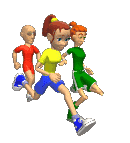
fno.org
|
|
| Vol 21|No 4|March 2012 | |
| Please feel free to e-mail this article to a friend, a principal, a parent, a colleague, a teacher librarian, a college professor, a poet, a magician, a vendor, an artist, a juggler, a student, a news reporter or to anyone else you think might enjoy it. | ||||
The problem of heavy backpacks and heavy textbooks has reached the attention of parent groups and bloggers who offer tips to reduce the load. One blogger, Vanessa Von Patten, offers "6 Steps to Lighten Your Student’s Backpack!"
The paper textbook is an anachronism. It is time for its burial. This article will focus on the learning opportunities presented by this new kind of learning tool, paying scant attention to the issue of weight, but the convenience of carrying a half dozen or more previously weighty tomes on a single tablet is nothing to sneer at. In addition, there should be some reduction in costs if there is no physical book, but so far the cost savings we see with electronic versions of trade books have not been extended to the realm of textbooks. Pricing of eBook textbooks seems linked to pricing from the past 50 years of book publishing. A New Kind of Book and a New Kind of Textbook This TED talk by software developer, Mike Matas, shows some of the dramatic new features his company, Push Pop Press, has created for the electronic book.
So far, the most exciting textbooks I have seen that exploit the special features of the eBook have been produced by Inkling, a company that is breaking new ground, as I illustrated in my November 2011 article, "Is the iPad a Game Changer? I am including a pertinent section in green below: Like the music industry, the textbook industry may be dallying and delaying rather than exploring and developing materials for use with devices like the iPad. When large companies delay, they may provide opportunities for small and agile entrepreneurs to step in to seize and re-shape a market. Has this already happened with K-12 textbooks? I went looking for such a company and found Inkling (http://www.inkling.com) They claim to be inventing electronic textbooks that exploit the special possibilities of an iPad instead of mimicking a traditional paper textbook.
I downloaded a free chapter from their textbook Experience History. True to their goal, this U.S. history text takes advantage of the iPad's features in a number of ways. The text is larger and quite attractive. There seem to be more illustrations and photographs, each of which can be enlarged and explored, in contrast with the other texts I examined which did not allow any real zooming or enlargement. Reading this chapter is a visually enjoyable experience with page design clearly a high priority. It feels more like reading the New Yorker than a text book. Another aspect of this text was the strong stance taken on the failings of Andrew Johnson when he took over the presidency after Lincoln's assassination. History texts are notoriously balanced, impartial and dry. In an effort to avoid bias and distortion, they tend to downplay drama, resist controversy and drain the lifeblood out of the story. Reading them is often quite sleep inducing. This text is lively, spirited and a bit spicy.
Not everyone will be comfortable with a history book that speaks with such authority and judgment, but it does make for good reading. The description of the political conflicts after the war dramatizes and clarifies the issues quite well. As you read through a chapter, you can stop to insert bookmarks, highlight text and take notes, features that take advantage of the iPad's touch screen capabilities. You may also come to what are called "dueling documents" - in this Reconstruction chapter there are three of them:
Rather than interrupt the flow of the narrative, Dueling Documents provide an opportunity to step aside and wrestle with primary source materials. At the end, there are questions designed to provoke inference and analysis.
In a similar fashion, the text provides "asides" called "Daily Life" that provide insight into the housing and living conditions of the people (in this case freed slaves) of the times. The iPad makes such asides work quite well, allowing the reader to step out of the flow of the narrative for a few minutes. Another type of "aside" is called "the Historian's Toolbox." In this chapter there is one called "Dressed to Kill" that challenges the reader to interpret an advertisement dealing with the Ku Klux Klan.
The use of asides exploits the capabilities of the iPad to provide learning experiences quite different from page turners of the past.
The Promises of this New Kind of Textbook This new eTextbook enhances the learning of students in several dramatic ways.
Note: The animated clip art in this article is from http://www.animationfactory.com/en/. It is copyrighted. |
||||
|
Copyright Policy: Materials published in From Now On may be duplicated in hard copy format if unchanged in format and content for educational, nonprofit school district and university use only and may also be sent from person to person by e-mail. This copyright statement must be included. All other uses, transmissions and duplications are prohibited unless permission is granted expressly. Showing these pages remotely through frames is not permitted. |




 Each reader may wander, wonder, pursue and ponder according to personal preferences and stye. There are better opportunities to focus the learning around curiosity and questions of import. The old textbooks told the student what to think about history, math and science. The new ones will allow for a more individualized approach. Each learner can develop her or his own understandings. The old textbooks explained while the new ones will challenge learners to wrestle with quandaries, ambiguities and enigmas.
Each reader may wander, wonder, pursue and ponder according to personal preferences and stye. There are better opportunities to focus the learning around curiosity and questions of import. The old textbooks told the student what to think about history, math and science. The new ones will allow for a more individualized approach. Each learner can develop her or his own understandings. The old textbooks explained while the new ones will challenge learners to wrestle with quandaries, ambiguities and enigmas.
